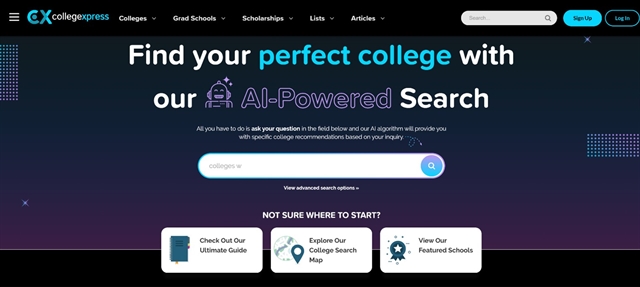Updated: May 27, 2025; April 17, 2023
Originally Published: Aug. 29, 2022
American colleges and universities, especially publicly funded institutions, are resilient. Many of the best-known have survived since the 19th century. They’ve weathered dramatic economic swings and vast culture shifts as competing institutions sprang up around them. The story of higher education in America is a story of long-term expansion.
That appears to be changing.
According to the IPEDS database, the number of public four-year universities shrank 2.3% from 2019-2021, with community colleges down 2.7%. For-profit colleges and smaller liberal arts institutions have faced enrollment losses and closures for some time. Decreasing birth rates are shrinking the recruitment pool. The 2008 recession and falling tax support for public schools have put higher education out of the reach of many. These downward trends show no signs of changing anytime soon.
As higher education compresses, even at the highest levels, it’s more important than ever for recruiters to reach prospective students where they live: online. A well-considered digital marketing strategy – one that reaches new student markets – can make all the difference in recruitment.
Top Trends in Digital Marketing for Higher Education
Generative Engine Optimization
AI has already transformed how people find information online. According to a report exploring the consumer adoption of AI, 27% of internet users use AI for research and information gathering. The younger the user, the more likely they are to incorporate AI into their daily lives.
It’s not surprising that AI-fueled apps specifically catered to streamline the college search process are becoming more common. These tools, including everything from standalone tools like Carnegie’s CollegeXPress to homebrewed tools made by Reddit users, present a solution to the sometimes overwhelming process of finding the right school. Prospective college students simply answer a few questions about their dream institution and the model crawls the internet for potential options.

Research tools like CollegeXpress are changing the college search process.
With more users adopting AI each day, having a presence in AI search is essential for universities. That’s where the emerging field of Generative Engine Optimization (or GEO) comes in.
In practice, GEO is very similar to Search Engine Optimization (SEO). In fact, Google has directly said that the best way to appear in its AI overview search feature is to rank highly in Google search results.
Broadly speaking, search engines rank content according to the author’s proven expertise on the topic, how frequently users engage with that content, and the usefulness of the content in question. AI uses many of the same signals when seeking relevant sources of information to use in its responses. Creating content that answers the questions prospective students have about your institution is still the best way to be visible in both organic and AI search.
If you’re a higher ed marketer, try every college search tool you can get your hands on. Take note of what features are playing a role in school selection. Not only is this useful insight into the priorities of prospective students, but it also indicates what keywords and topics AI will be crawling for on your site. Create new content that speaks to those topics and, if you have an authoritative, well-maintained domain, you’re much more likely to show up in AI search.
Influencer Marketing
“Influencers” got their name for a reason. For younger generations, prominent social media personalities play major roles in purchasing decisions, college included.
A few of your current students might have been able to build large social media followings. Even students who engage in social media casually can be helpful in spreading the word about what it’s like to attend your school.
In recent years, many colleges and universities have partnered with influencers from within the campus community to promote their schools. Both management and cost have been minimal for the most successful of these programs. The school will offer, say, free tickets to campus events to creators who agree to share content about those events with their audiences.
A student with a large following on YouTube, for example, might create and post a video about an athletic event. Marketers might encourage influencers to talk about their overall experience at the school. Such videos can reach a large, targeted audience with little investment.

Videos such as this one can reach large, engaged groups of prospective students where they’re searching.
Compensation can cause skeptics to question authenticity, even if the compensation is merely swag and tickets. Transparency can head that off. If schools and creators are frank about their relationship and schools refrain from censorship, the content can look, feel, and be genuine. (Pro hint: Find partners who are already genuinely enthusiastic about your institution.)
Social media, with its high-definition media sharing and timely content, offers a unique opportunity to higher education, not all of it involving student recruitment. Facebook skews older, which makes it effective for engaging with alumni. TikTok and Snapchat, with their vast teen audience, are perfect for showcasing your campus and student events. Choosing the right channel can make all the difference in reaching particular audiences.
Simplicity and Authenticity
Younger demographics harbor deep suspicions of advertising, large institutions, and corporations. Marketers should note that students currently applying to college were born at the beginning of two wars. They watched loved ones struggle financially during the 2008 recession, saw the most divisive election in modern history, and have now attended high school during a pandemic. Their distrust is understandable.
Honesty goes a long way with them, especially with students considering college. Today’s prospective students want straightforward descriptions of what they’ll get on campus. Avoid wordy, fluffy messaging about the institution’s greatness.
They don’t care about the school’s accolades; they care about what those accolades mean for them. What’s the day-to-day experience? What’s the dorm room like? What will it feel like to be on campus?
Higher ed marketers are getting at this by sourcing user-generated content from social media. These schools invite their social media followers to submit images and video on a specific topic related to the institution or that highlight their time on campus. The marketing team curates these contributions into galleries and videos. The results feel more natural and honest than professionally created ad campaigns.
This University of Florida video ad captures the moment students are accepted to the school.
Students who grew up with social media recognize and respond to this organic, hands-off aesthetic. Current students whose work appears in this informal sort of marketing tend to feel more connected to the school, part of something bigger; prospective students see honest portrayals of life on campus.
Short-Form Video and YouTube Advertising
Most Americans encounter somewhere between 4,000 and 10,000 advertisements each day. Today’s students have grown up bombarded by advertisements and messaging.
YouTube’s short-form advertising formats – the six-second format, notably – attempt to address this fatigue by keeping things brief. Whether they’re successful at breaking through or just add more noise is a separate question.
That said, brands have done some compelling things with just six seconds. Creating a quick, punchy message or story can be a helpful exercise in brevity, tightening marketers’ focus on the most direct ways to reach the audience. Remember, the goal isn’t to summarize your entire university in six seconds. A short-form video ad is effective if it captures the audience’s interest and makes them want to learn more. Try picking a single selling point or message as the ad’s focus. When you’re trying to reach an oversaturated audience, every word counts.
Digital marketing teams in higher education have come to rely on video for a wide range of purposes. That trend is likely to continue. Short-form testimonials and videos highlighting your community are a great, relatively inexpensive way to shape impressions early in the recruitment process.
You can also re-cut videos to different lengths that suit YouTube’s advertising options. The six- and 15-second lengths are the most common formats. Your audience will thank you for keeping things brief.
Multi-Channel Marketing
Finding the bandwidth to create original content is a constant challenge for higher ed marketers. The opportunity to invest in something new, whether it’s a recruitment-focused video or written content, may not come very often. That’s why it’s so important to get every ounce of value out of the content you produce.
Too often, higher ed marketing is more reactive than proactive, creating one-off pieces of content that suit one immediate purpose, are promoted through a single event or channel, and then never used again. Multi-channel marketing takes a different approach. Instead of creating a churn of single-use content pieces, multi-channel marketers create one flexible piece of content and repurpose it for a variety of promotional channels and functions.
Imagine you’ve been tasked with creating a new video focused on student recruitment. The purpose is to highlight the features and personality of your institution for prospective students and offer some insight into the student experience. Between creative development, shooting new footage, stakeholder review, and multiple rounds of edits, creating this video will be a substantial project. If you’re using old-school methods, you might create a single, high-profile video that you feature on your university’s homepage. Maybe you write a news article that links back to the homepage as a means of promotion.
Using multi-channel marketing, you’d instead create a long-form master video for use on your website, then create different edits of the video for use on other channels. You could turn that one-minute brand video into a 15-second pre-roll ad, a whole suite of social media posts, short-form video for social ads – even a commercial for national TV.
Investing in time-intensive, high-quality content is great, provided you get as many eyeballs on it as you possibly can. Multi-channel marketing is how higher ed marketers are making the most of their limited resources.
Need help with your higher education digital strategy or digital marketing efforts? Contact our expert team!






